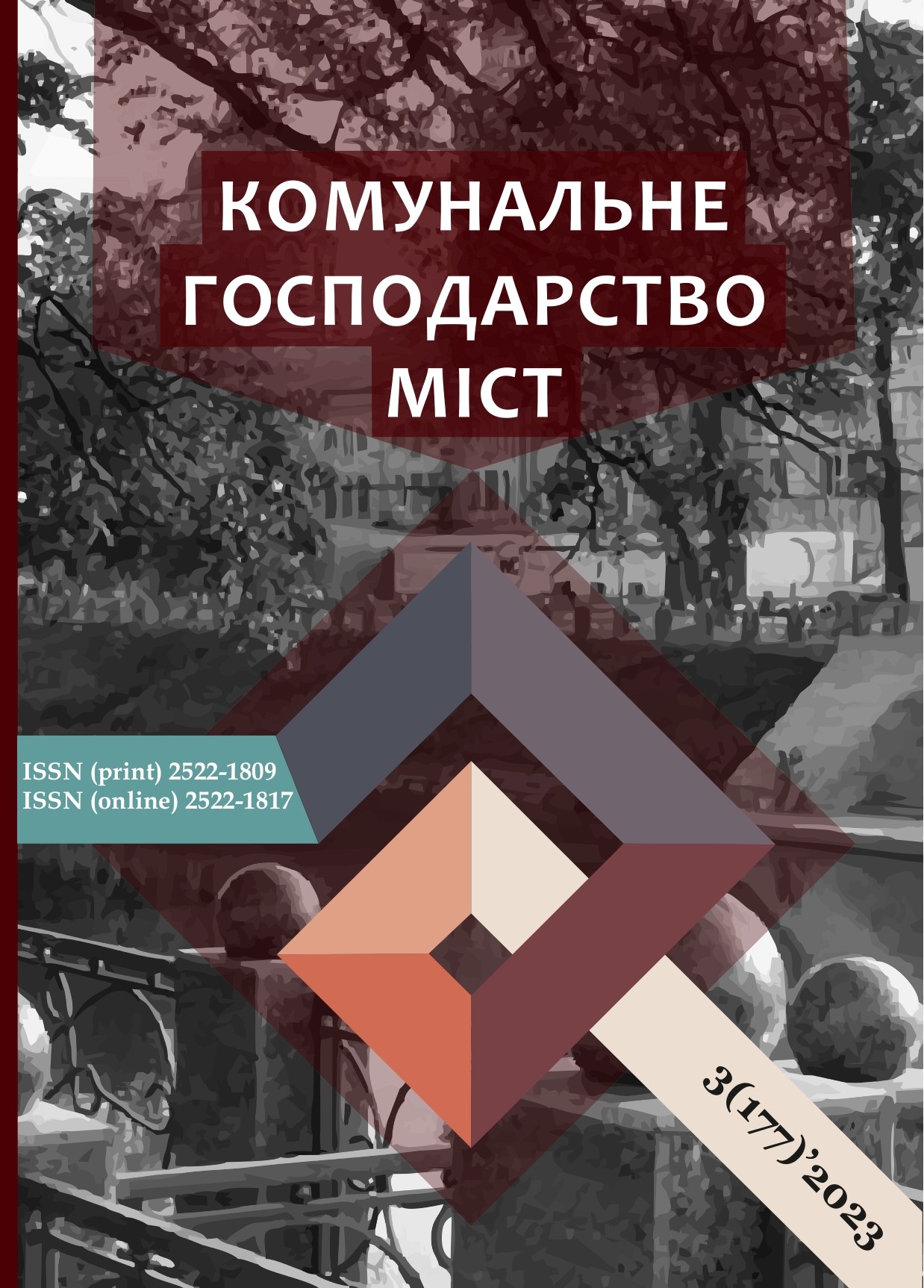CURRENT DIRECTIONS OF FORMATION AND IMPLEMENTATION OF LAND USE MONITORING OF UNITED TERRITORIAL COMMUNITIES
DOI:
https://doi.org/10.33042/2522-1809-2023-3-177-104-108Keywords:
monitoring, united territorial communities, monitoring GIS mapAbstract
The relevance of the formation and implementation of land use monitoring of united territorial communities has been proven. The purpose of the research is the formation of modern trends in the development and implementation of land use monitoring of united territorial communities. The tasks are solved in the work: improvement of theoretical provisions regarding the definition of land use monitoring; characteristics of typological principles regarding the definition of monitoring; development of an integrated approach to assessing the level of land use; development of geo-information support for monitoring. Monitoring of land use of united territorial communities is a system consisting of spatial, urban planning, ecological and socio-economic support, determined on the basis of evaluation procedures by applying analytical, expert methods, mathematical modeling, tools of geoinformation systems. The typological principles of determining land use factors on the basis of spatial, urban planning, socio-economic and environmental support are characterized, which allow to carry out an integral assessment of the level of development and use of monitoring procedures. The proposed geo-information monitoring support is defined as the resulting element of the formation and implementation of monitoring for increasing the efficiency of land use in the context of creating conditions for regional development. The method of integral assessment is proposed as the main element of the technology of formation and implementation of monitoring, based on analytical and expert methods, which made it possible to form a systematic monitoring environment at the regional level. The application of this method provides opportunities for mathematical modeling of the influence of factors and the construction of geo-information support for this process.
References
Overkovska, T. (2015) Monitoring of land in Ukraine: legal aspects. Legal journal «Scientific works of National Aviation University. Series: Law Journal «Air and Space Law», 1 (34), 125–128. Retrieved from : http://www.law.nau.edu.ua/images/Nauka/Naukovij_jurnal/2015/statji_n1_34_2015/25.PDF
Medvedev, V., Laktyonova, T. (1992) The concept of soil monitoring. Bulletin of Agricultural Science, 9, 46–52.
Horbatiuk, V., Klymenko, K. (2007) Organizational and technological features of land monitoring at the regional level. Geodesy, cartography and aerial photography, 69, 149–155. Retrieved from : https://science.lpnu.ua/uk/istcgcap/vsi-vypusky/vypusk-69-2007/organizaciyno-tehnologichni-osoblyvosti-zdiysnennya-monitoryngu
Velychko, O., Dudych, I., Shpenyk, Yu. (2001) Basics of ecology and environmental monitoring. Uzhhorod: UzhNU, 285.
Korniiets, A. (2018) Information provision of geoecological monitoring of land use in the region. thesis... candidate technical Sciences: 05.24.04 / O.M. Beketov National University of Urban Economy in Kharkiv, 225.
Butko, M., Zelenskyi, S., Akymenko, О. (2008) Modern problems of assessing the investment attractiveness of the region. Economy of Ukraine, 11, 30–35.
Mamonov, K., Kanivets, O., Liu, Chan (2022) Development of the method of integral assessment of land use of united territorial communities. Municipal Economy of Cities, 4, 171, 87–91. https://doi.org/10.33042/2522-1809-2022-4-171-87-91
Downloads
Published
How to Cite
Issue
Section
License
The authors who publish in this collection agree with the following terms:
• The authors reserve the right to authorship of their work and give the magazine the right to first publish this work under the terms of license CC BY-NC-ND 4.0 (with the Designation of Authorship - Non-Commercial - Without Derivatives 4.0 International), which allows others to freely distribute the published work with a mandatory reference to the authors of the original work and the first publication of the work in this magazine.
• Authors have the right to make independent extra-exclusive work agreements in the form in which they were published by this magazine (for example, posting work in an electronic repository of an institution or publishing as part of a monograph), provided that the link to the first publication of the work in this journal is maintained. .
• Journal policy allows and encourages the publication of manuscripts on the Internet (for example, in institutions' repositories or on personal websites), both before the publication of this manuscript and during its editorial work, as it contributes to the emergence of productive scientific discussion and positively affects the efficiency and dynamics of the citation of the published work (see The Effect of Open Access).

